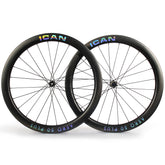REPAIRING A FLAT TIRE
The biggest disadvantage of inflatable tires is the inconvenience of punctures. Nobody plans for a flat tire; That's why a cyclist should learn how to repair a flat tire. At first glance, this important skill may seem like a daunting task, but after reading this article, you will gain the knowledge necessary to master this skill.
Flat tires are the result of damage to the tubes. Sharp objects such as nails, broken glass and sharp objects such as thorns and sharp stones are the most common causes of tire punctures. There are two types of bicycle tire punctures: punctures and snakebite punctures. Pinpoint punctures look like pinholes in the tube. Spot tire damage is caused by sharp, pointed objects such as nails, thumbtacks, needles or other pointed objects. Sometimes a pinpoint puncture site is difficult to recognize because air gradually comes out of the tube.
Stings caused by snake bites are also known as contusions. When you hit a pothole or drive over a rock with an underinflated tire, the tire compresses, causing the tube to come into contact with the tire and rim. When the rim pinches the tube, the tube tears at the two points of contact, hence the name snakebite clamping. In most cases, snakebite sprains are serious and difficult to repair. It is recommended that you purchase a new tube to replace a puncture site. You can avoid snake bites by driving with the correct tire pressure.
Tools required to repair a flat tire
A good tire repair kit should contain the following items:
- Reifenheber
- patches
- Glue
- sandpaper
- A bicycle pump

REPAIRING A PUNCHED TIRE ON A TUBE
1. Remove the hose
Remove the punctured wheel from the fork. If there is still a lot of air in the tube, deflate the tire by loosening the valve. Use two tire levers to disassemble and expose the tube. All you have to do is remove the tire from the rim on one side of the wheel. Pull out the hose but leave the valve in place.
2. Find the injection site
To locate the hole in the tube, you will need to inflate the punctured tire with your pump. Listen for noises on the surface of the hose. Flat tires occur in different degrees and sizes. Tiny holes make no noise, and you may need to submerge the inflated tube in a tub of water to locate the puncture. Look for air bubbles. Mark the breakdown with a marker or chalk.
3. Find the cause of the leak
In step 2 above, we did not completely remove the hose. The reason for this is that it allows us to find the cause of the breakdown. Now that you know where the hole is, align the tube with the rim. Check the area of the tire that corresponds to the hole for any sharp objects that may still be on the inside of the tire. Remove the sharp object (if you found one).
4. Apply glue
Once you know where the hole is, the next step is to seal it. If your hose is dusty or dirty, you should wash the area around the hole first. Water and dirt affect the adhesive properties of the patch; therefore, the area marked for patching must be clean and dry. Dry the marked area and apply the glue. Rub the surface around the hole with the sandpaper. This will help the patch stick to the pipe. How do you know how much glue to apply? Tire patches come in different sizes. Bruises require larger patches than puncture punctures. The size of the puncture determines the size of the patch. The adhesive area should cover at least the area of the patch, which you can spread over a larger area for safety. Depending on the instructions on the adhesive packaging, wait for it to dry. Normally it takes 1-5 minutes.
5. Improvement
Carefully remove the patch from its foil packaging. Carefully place the patch over the hole. Press the patch firmly onto the pipe with your finger or a blunt, hard object. This will remove any air that may be trapped between the patch and the hose. Give the patch a few minutes to adhere to the surface of the pipe. Carefully remove the patch's plastic packaging. You can inflate the tire and run the freshly patched tube through a tub of water. This way you can check whether the plaster is holding well or whether you got new holes when repairing the hose.


Learn these skills, stay safe and enjoy your ride.





